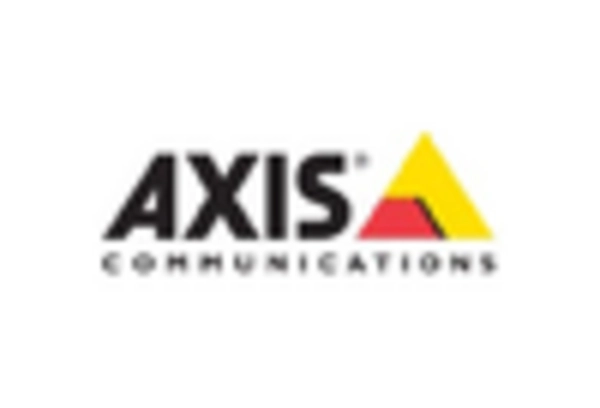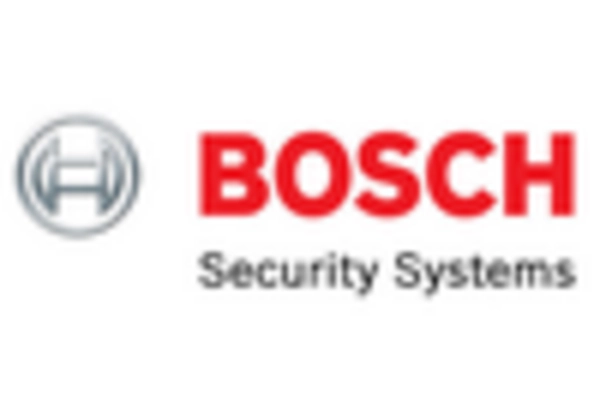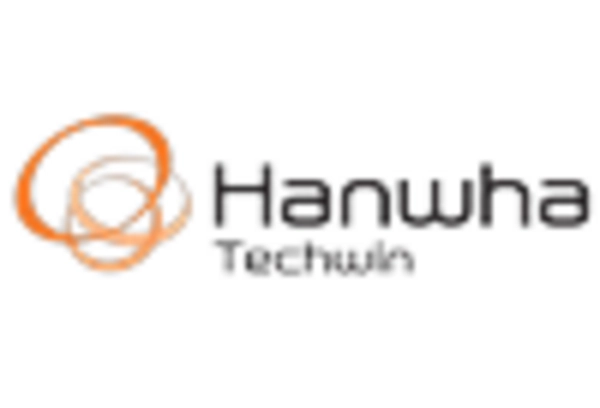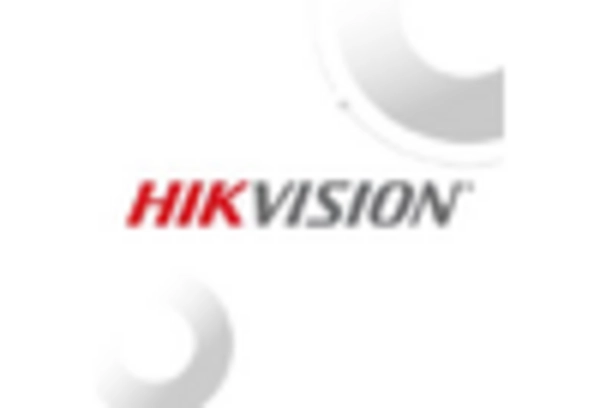Rising Security Concerns
The increasing prevalence of crime and security threats in the GCC region has led to a heightened demand for advanced surveillance solutions. As urbanization accelerates, cities are becoming more vulnerable to various security challenges, prompting governments and businesses to invest in the video surveillance market. In 2025, the market is projected to grow at a CAGR of 12.5%, driven by the need for enhanced security measures. This trend is particularly evident in sectors such as retail, banking, and transportation, where the implementation of video surveillance systems is seen as a critical component of risk management strategies. The video surveillance market is thus positioned to benefit from this growing awareness and the necessity for robust security frameworks.
Technological Advancements
The rapid evolution of technology is significantly influencing the video surveillance market. Innovations such as high-definition cameras, cloud storage solutions, and advanced analytics are transforming how surveillance systems operate. In the GCC, the integration of smart technologies is expected to enhance the effectiveness of surveillance systems, making them more efficient and user-friendly. The market is anticipated to reach a valuation of $3 billion by 2026, reflecting the increasing adoption of these technologies. Furthermore, the video surveillance market is witnessing a shift towards IP-based systems, which offer greater flexibility and scalability compared to traditional analog systems. This technological shift is likely to drive further investments in the sector.
Growing Demand from the Retail Sector
The retail sector in the GCC is experiencing a surge in demand for video surveillance solutions, driven by the need to enhance security and improve operational efficiency. Retailers are increasingly recognizing the value of surveillance systems in preventing theft, managing inventory, and ensuring customer safety. The video surveillance market is projected to see a significant uptick in sales, with the retail segment expected to contribute approximately 30% of the total market revenue by 2025. This growth is indicative of a broader trend where retailers are investing in integrated surveillance solutions that combine security with analytics to optimize their operations and enhance the customer experience.
Government Initiatives and Investments
Governments in the GCC are actively promoting the adoption of video surveillance systems as part of their broader security strategies. Initiatives aimed at enhancing public safety and security are leading to increased funding for surveillance projects. For instance, the UAE government has allocated substantial budgets for smart city projects that incorporate advanced surveillance technologies. The video surveillance market is expected to benefit from these initiatives, with public sector investments projected to account for over 40% of the market by 2025. This trend indicates a strong commitment from governments to leverage technology for improved security outcomes, thereby driving growth in the video surveillance market.
Increased Focus on Data Privacy and Compliance
As the video surveillance market continues to expand, there is a growing emphasis on data privacy and compliance with regulations. In the GCC, businesses are becoming more aware of the legal implications of surveillance practices, leading to a demand for solutions that ensure compliance with local laws. The video surveillance market is adapting to these requirements by offering systems that incorporate privacy features and data protection measures. This focus on compliance is likely to drive innovation within the market, as companies seek to balance security needs with the rights of individuals. As a result, the market is expected to evolve, with an increasing number of solutions designed to meet these regulatory challenges.
















Leave a Comment